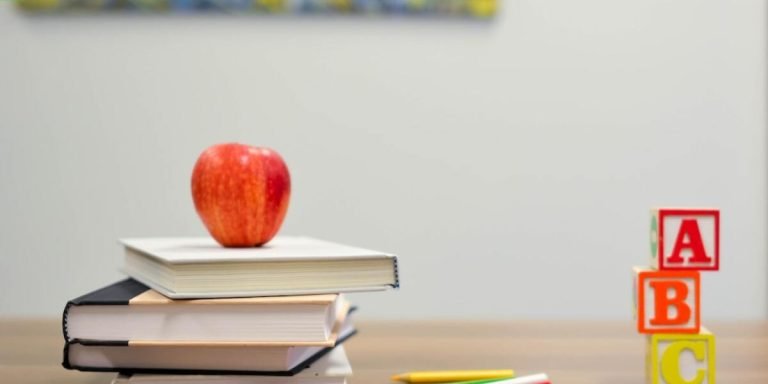Sensory Functioning in Early Childhood: A Crucial Aspect of Cognitive Development
Understanding the concept of sensory functioning is pivotal in grasping the bigger picture of child cognitive development. When we speak about sensory functioning, it directly points to how children interpret their surrounding environment through sight, sound, smell, touch and taste. It’s a fundamental building block that supports learning and interaction with others.
The role it plays extends beyond just discerning different environmental stimuli – equally important are its contributions towards fostering motor skills and social-emotional growth amongst youngsters. Sensory experiences traditionally orchestrated via developmental activities or play can be seen as invaluable Special Education Resources and Support mechanisms aiding childhood progressions.
Did you know?
Children’s sensory processing abilities, part of the cognitive development process, start forming in-utero – as early as 26 weeks into pregnancy. This is when responses to sound and light stimuli commence establishing lifelong learning patterns.
Understanding Sensory Functioning in Special Education
Sensory functioning plays a vital role in the process of learning, especially within special education. As we progress through 2023, a growing emphasis is placed on understanding this intricate connection and how to effectively harness it for improved educational outcomes. This goes hand-in-hand with our slant towards technological integration into special education resources and support.
The premise of sensory functioning delves deep into how students receive information from their environment – visually, audibly or through touch – and subsequently interpret that data. For children with unique needs enrolled in special education programs, these methods may not align traditionally as they face challenges processing conventional stimuli.
In response to this need-gap emerges technology – an aide designed to bridge these barriers by crafting specialized tools aiming at the enhanced comprehension capacities of such students. Technological advances customize sensory experiences catering specifically toward individual learning styles optimizing information delivery according to each child’s preferred method.
Therefore when melding technology with special education strategies today’s educators are now armed with potent arsenal making classrooms more inclusive while ensuring no student lags behind because their senses perceive differently.
Defining Sensory Processing Issues: Impact on Learning and Development
Sensory functioning plays a crucial role in special education, especially when it comes to understanding the unique needs and learning processes of every child. Our comprehension begins with defining sensory processing issues as they are related directly to how children perceive their environment.
“Sensory Processing Issues” refers to an individual’s inability or difficulty interpreting information collected by their senses – sight, sound, touch taste and smell. The impact on learning can be significant since these functions aid cognitive development and daily interaction with outside stimuli.
A student battling a sensory processing issue may interact differently with his/her surroundings compared to other kids. For instance, some might find normal lighting overly bright while others could feel overwhelmed by everyday sounds like classroom chatter which is often ignored by most peers.
Technology integration into special education has become pivotal in addressing sensitivity concerns caused by sensory functioning irregularities. A wide range of specialized tools has made 2023 classrooms more inclusive than ever before.
1) Sensory integration therapy equipment: These help students cope better through physical movement activities that stimulate different senses.
2) Assistive devices: Including noise canceling headphones for auditory sensitivities or specially designed seating cushions offering tactile input.
3) Educational software programs: Customizable settings allow teachers adjust visual cues depending upon each student’s comfort level thereby reducing unnecessary distractions during lessons.
Aside from this tech arsenal at disposal within school premises; home-based technologies also play a part in extending support beyond educational institutions making ‘Special Education Resources’ virtually accessible anywhere anytime!
Strategies for Supporting Students with Sensory Challenges
Supporting students with sensory challenges is a vital component of special education. It requires understanding, patience and the application of targeted strategies which can make significant improvements in their learning journey.
Sensory functioning plays an integral role in how children perceive and interact with the world around them. For some learners dealing with sensory issues, conventional teaching methods may not always be effective. This highlights the growing demand for innovative approaches to support these learners while promoting inclusive education.
One such approach revolves around integrating technology into educational processes – a trend that has acquired more importance than ever in 2023’s educational scenario due to its potential for customization based on individual needs.
Through technology integration, it becomes easier to create tailored learning experiences that cater specifically to every child’s unique requirements.
Digital tools like interactive whiteboards or tablets can offer tactile stimuli helping those who learn best through touch while personalized audio-visual content amplifies engagement levels of auditory or visual learners.
Evaluating Effective Special Education Resources for Sensory Needs
In the ever-evolving landscape of childhood education, technological advancements play an increasingly significant role. A notable area where tech has made a substantial impact is in Special Education resources for children with sensory needs. Sensory functioning pertains to how our senses (touch, taste, smell, sight, hearing) process and respond to stimuli from the environment around us.
Children with unique sensory processing requirements often face challenges in traditional learning environments. It’s imperative that we equip schools and caregivers with effective tools tailored for such learners’ specific needs. Technological innovations have stepped into this gap by providing diverse solutions bringing about transformational changes in special educational practices targeting optimal sensory functioning.
From interactive touch screens helping fine motor skills development to specialized headphones allowing noise control; technology has opened up new pathways facilitating personalized learning experiences accommodating various spectrums of sensory sensitivity levels among these young students.
The effectiveness of these innovative resources can be evaluated considering multiple aspects like their adaptability per individual child’s requirement or their success rate on improving focus levels during study hours compared against conventional teaching methods.
Identifying Inclusive Materials Tailored to Diverse Sensory Requirements
In the pursuit of excellence in special education, one key aspect that educators and parents must consider is identifying inclusive materials tailored to diverse sensory requirements. Sensory functioning plays a significant role in how children perceive, interact with, react to their environment.
Firstly, let’s delve into what we mean by sensory functioning. This term refers to our ability not just to see or hear but experience the world through all five senses – sight, touch, smell, taste and hearing – plus two more lesser-known ones – vestibular (balance) and proprioceptive (awareness of body position). Children on the autism spectrum or kids with certain learning disabilities are often challenged when it comes for processing these forms of input.
So why do we need inclusive materials? Simply put: because every child’s needs differ vastly from another’s. Some require resources promoting calm transitions between activities while others may benefit from high-energy motions like bouncing on an exercise ball during reading time.
1) Interactive Learning Tools: Applications allow learners engage actively within lessons making content feel less abstract- tactile images combined with audio descriptions simulate astronaut experiences walking moon surface bypassing possible visual impairments.
Utilizing Technology and Apps to Enhance Sensory Engagement
In the current era of smart education, technology is significantly reshaping special needs teaching methodologies. Parents and educators can now access an array of technological tools and apps specifically designed to enhance sensory engagement for children with diverse learning requirements.
One such innovation that stands out in this realm is “sensory functioning.” Sensory functioning refers to how our senses receive information from the environment around us — sight, hearing, taste, touch and smell. For some kids experiencing barriers in these areas due to varying conditions or disorders can create hurdles while trying to grasp educational concepts.
This traditional scenario makes it difficult not only for students but also demands extra effort from parents and instructors. The good news? With user-friendly ‘sensory-engaging’ technologies coming into play today at a high pace—learning has become more interactive, fulfilling as well as accessible than ever before!
Today’s revolutionary software applications focus on enhancing all facets of sensory interaction using engaging graphics or real-life simulations which appeal highly visual learners who might otherwise struggle with conventional text-based lessons formats.
Moreover: These platforms offer exceptionally tailored auditory stimulants—perfectly fashioned sounds assisting those whose primary mode of understanding lies within their acoustic sense! Furthermore—for tactile seekers—a host of application have surfaced promising incredibly realistic texture experiences thereby magnifying comprehension levels manifold!
Collaborative Approaches in Providing Support for Sensory Functioning
Streamlining the integration of technology in education has been a key topic these past few years, more so now in 2023. Particularly, its role in facilitating collaborative approaches to support sensory functioning is essential for inclusive learning environments. At present, educators have access to myriad resources and platforms that could manifest into beneficial tools tailored particularly towards special educational needs.
One such example includes applications bolstering audiovisual aids which aid students who need additional visual or auditory input. For instance, videos with subtitles can offer multi-sensory stimuli thereby helping both neurotypical children and those with certain sensitivities understand lessons better.
Moreover, adaptive hardware like interactive whiteboards turn traditional classrooms into dynamic spaces fostering collaboration while meeting varied sensory needs effectively. Furthermore digital storybooks allow verbal output thereby aiding pupils struggling hearing impairments without detracting from everyone else’s learning experience.
Roles of Parents, Educators, and Therapists in a Multidisciplinary Team
The success of developing and improving sensory functioning in children is not limited to the classroom but involves a comprehensive approach, requiring active participation from parents, educators, as well as therapists. All these roles form an essential part of what’s known today as a multidisciplinary team.
Parents play one of the most critical parts in supporting their child’s sensory processing needs. This involvement ranges from observation – identifying triggers or behaviours linked to impaired sensory function – to providing consistent support at home that mirrors strategies employed within educational settings.
Educators bear the responsibility for creating an inclusive learning environment. By integrating technology into education systems over recent years, they have enhanced students’ engagement with various activities tailored towards boosting their sensory functioning skills. In 2023 alone has seen significant advancements in special education resources such as virtual reality tools that simulate real-life situations helping children better understand and navigate challenging environments.
Therapists provide specialised intervention strategies designed according to each child’s unique requirements regarding their individual strengths and areas needing improvement concerning their sensory regulating capabilities. They use innovative methods like teletherapy where virtual platforms are utilized for interactive therapeutic sessions ensuring no compromise on therapy due to physical distancing limitations faced during present times.
Collaboration between all three parties ensures interventions applied consistently across different spheres of a child’s life making it more effective while also reinforcing trust among everyone involved; this holistic treatment encourages progress by promoting seamless communication loops leading toward achieving set goals related specifically improving specific aspects relating ‘sensory functioning’.
Community Programs and Initiatives Fostering Inclusion
Community involvement and programs can play a powerful role in fostering inclusion, particularly for students that require support with sensory functioning. In today’s world where technology is at the forefront of education, new initiatives are continually being developed to integrate technological tools into educational strategies.
One such initiative includes the integration of adaptive technologies in classrooms. These devices can greatly assist students struggling with sensory functioning by offering customized learning experiences tailored to their individual needs. Everything from smartboards used for visually stimulating presentations to noise-cancelling headphones allowing children dealing with auditory issues focus better on tasks at hand fall under this category.
Another tech-driven move gaining popularity involves online teacher-parent platforms which allow parents or caregivers immediate access to classroom information helping them stay connected without any delay or miscommunication barriers.
Virtual reality (VR) has also emerged as an effective tool supporting not only academic but social development too among special-need learners. With immersive VR-based lessons and environment simulations, these young minds get a chance towards more interactive and accessible learning when compared traditional methods.
Moreover, community outreach programs have been facilitating training sessions aiming toward equipping teachers, administrators along parents about how they could best use available technological aids aiding in inclusive education efforts like never before!
Conclusion
Thus, sensory functioning is not just a fun game of touch and feel for your little ones. It’s the basecamp that marks their cognitive journey towards comprehensive comprehension of the world around them. Indeed, navigating through this fascinating phase can be as rewarding to you as it is vital for them.
As we bid adieu to our insightful expedition into ‘Early Childhood Sensory Functioning,’ don’t stop here! There are boundless territories within childhood education yet unexplored by you on our website. We’ve tailored numerous articles designed specifically for parents and educators like yourself who are eager to make child development an engaging adventure rather than merely a milestone march.
So go ahead; dive deeper into insights only at arm’s length away from you!







